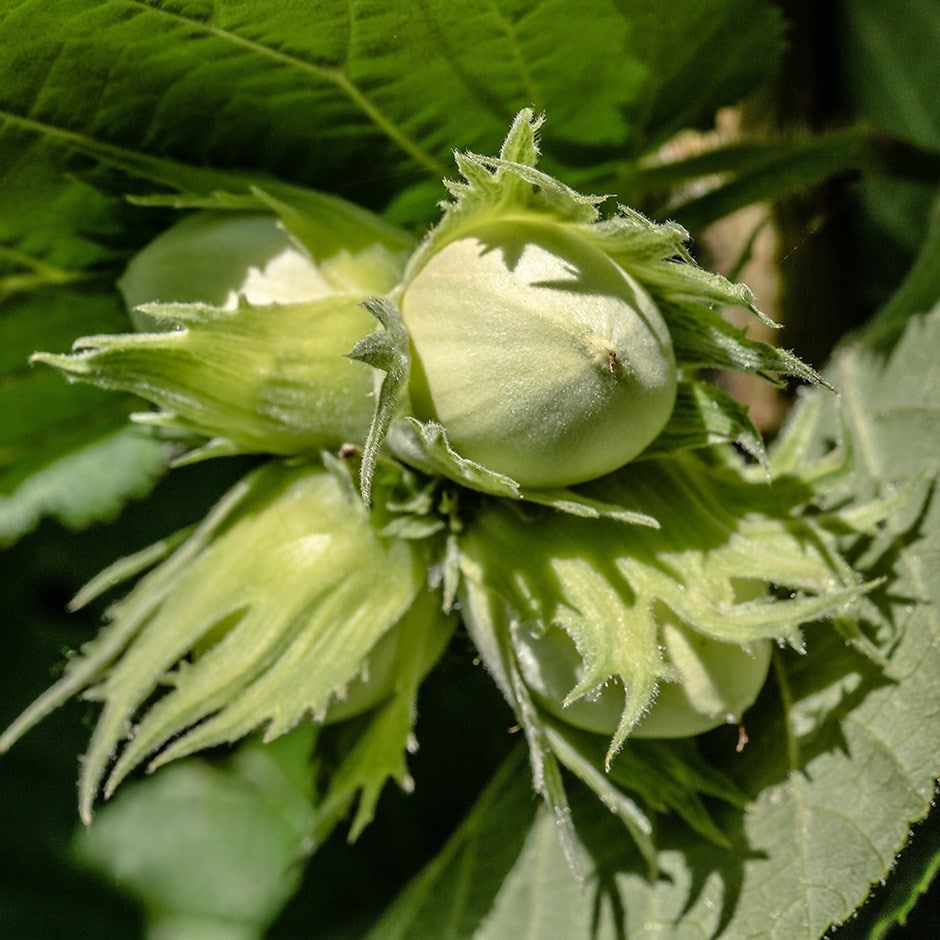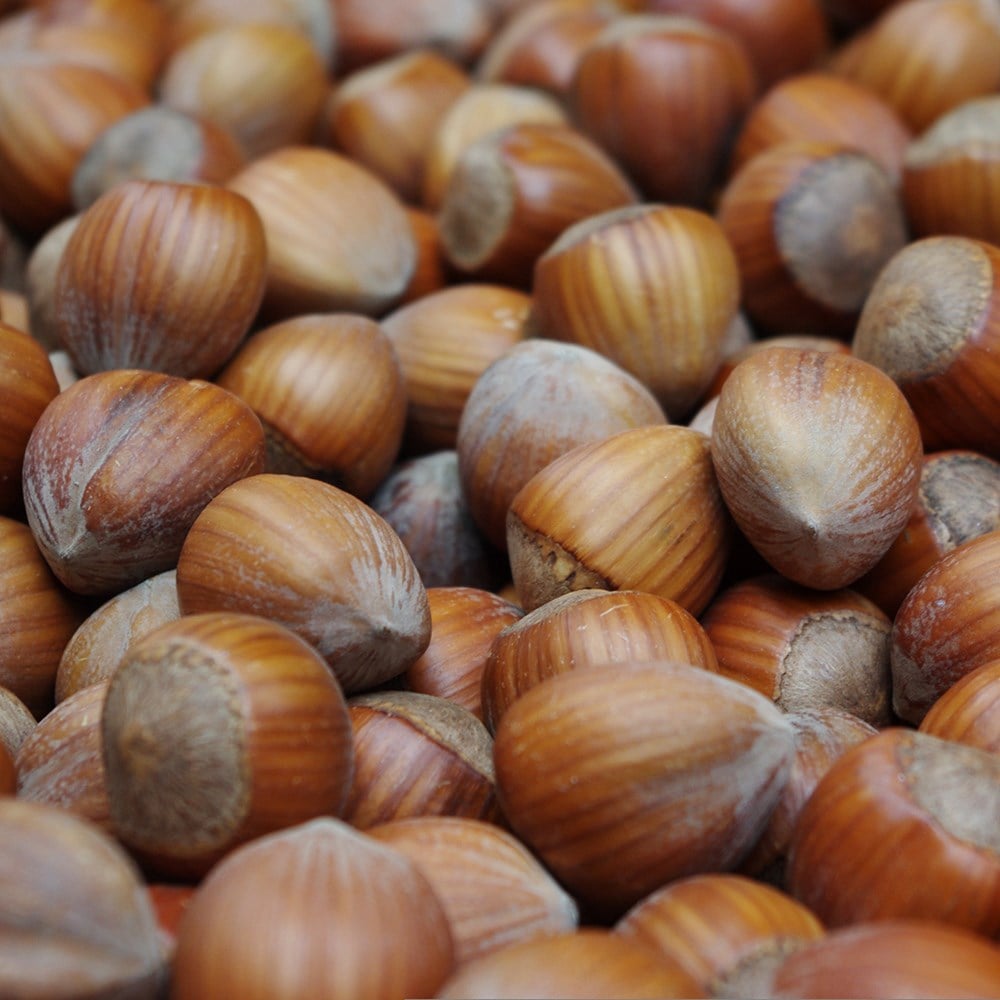Eventual height & spread
cobnut 'Hall's Giant'
cobnut / filbert / hazlenut ( syn. Corylus maxima Halls Giant)
- bare root | 1.2m tall
- £34.99
- available to order from spring
Delivery options
- Standard £12.99
- Position: full sun to partial shade
- Soil: moderately fetile, moist but well-drained soil
- Rate of growth: fast
- Flowering period: February to March
- Hardiness: fully hardy
'Hall's Giant' is a traditional cobnut variety prized for its exceptionally large and glossy rust-brown-shelled nuts. Notably resistant to gall mite, it boasts outstanding quality and a rich, delectable flavour, making it an ideal choice, especially for novice growers. While technically self-fertile, optimal pollination is achieved with another nearby plant such as ‘Kentish Cob’. Hardy and robust, this variety adapts well to varying conditions, thriving best in sheltered, well-drained locations. Its ornamental catkins exhibit a striking red hue, and its nuts are ready for harvest from August to early September.
When planting cobnut or filbert, improve the soil with well-rotted compost or a soil conditioner and add mycorrhizal fungi to encourage strong root establishment. Support taller young plants with a cane or stake until they are established, and water generously around the base, especially in the first season.
Bare-root plants should be planted out as soon as they arrive. If this is not possible, they can be heeled in temporarily (covering their roots with soil) or potted up. Before planting, soak the rootball in a bucket of water for half an hour and make sure to incorporate lots of well-rotted garden compost in the planting hole.
These trees crop reliably on chalky soils and are best trained as a goblet-shaped bush for good fruiting. Keep a 60cm (2ft) radius around the base clear of weeds or grass, and apply a 5-7cm (2-3in) mulch of well-rotted organic matter each spring to conserve moisture and feed the soil.
Prune in March by removing dead, diseased or damaged wood, and thin out overcrowded stems if needed to maintain the open goblet framework. Light summer pruning can also help check vigorous growth and encourage nut production. For the best harvest, plant more than one cultivar nearby to ensure cross-pollination, as this greatly improves both yield and nut size.
Protect developing nuts from squirrels, who can strip trees before they are ready, by netting individual branches, using tree guards, or harvesting early once the husks begin to loosen.
Bare-root plants should be planted out as soon as they arrive. If this is not possible, they can be heeled in temporarily (covering their roots with soil) or potted up. Before planting, soak the rootball in a bucket of water for half an hour and make sure to incorporate lots of well-rotted garden compost in the planting hole.
These trees crop reliably on chalky soils and are best trained as a goblet-shaped bush for good fruiting. Keep a 60cm (2ft) radius around the base clear of weeds or grass, and apply a 5-7cm (2-3in) mulch of well-rotted organic matter each spring to conserve moisture and feed the soil.
Prune in March by removing dead, diseased or damaged wood, and thin out overcrowded stems if needed to maintain the open goblet framework. Light summer pruning can also help check vigorous growth and encourage nut production. For the best harvest, plant more than one cultivar nearby to ensure cross-pollination, as this greatly improves both yield and nut size.
Protect developing nuts from squirrels, who can strip trees before they are ready, by netting individual branches, using tree guards, or harvesting early once the husks begin to loosen.

